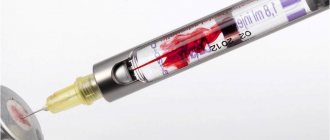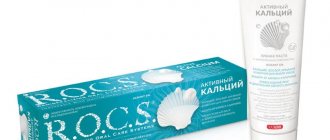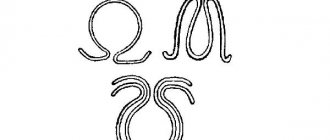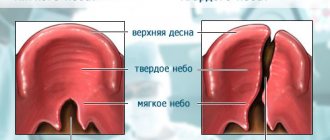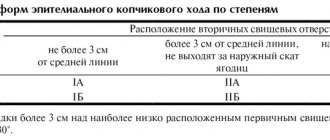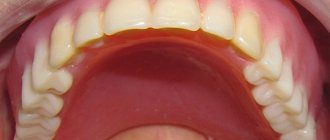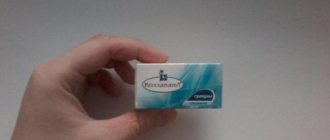1126
Obturators are prosthetic structures or devices designed to close or “clog” pathological defects in the walls of the oral cavity.
Most often, obturators are used to eliminate defects in which a violation of the communication between the oral cavity and the nose is diagnosed.
Doctors resort to fixing such products only if it is impossible to eliminate the defect with plastic surgery, or when the patient refuses surgical treatment.
Historical component
Attempts to separate the RP and the nose in case of palate defects were made by dentists back in the 14th century. The first obturator was made of leather, cotton wool, wax and a sponge, which was pressed into a hole in the roof of the mouth.
By mid-1565, Alexander Petronius had invented gold plates for these purposes, and the Dutchman Laure Becom proposed designs made of silver and ivory.
In France in those years they also tried to find a way to eliminate palate defects. Leading surgeon Ambroise Pare created 2 types of obturators. One design looked like a cuff cufflink with a wide and narrow part. The first covered the palate defect, and the second fixed the prosthesis in the cleft, relying on the nasal passages and palatine processes. The narrow part also served as a base for the sponge.
Another type of obturator was made in the form of a plate of silver or gold. A sponge was attached to the back of the product using a clamp. The plate covering the defect was held firmly in place by the swelling of the sponge.
After several uses of such obturators, doctors came to the conclusion that the sponge creates a bacterial environment in the oral cavity, because it absorbs saliva and mucous nasal secretions.
Interestingly, the French surgeon considered the main purpose of installing such structures to be to improve speech functions in cleft palate . He tried to find an effective solution to this problem, which is still the main problem with congenital nonunions of the palate.
Pare's otodontic apparatus was modified by Fauchard in the 17th century. On the plate, instead of a sponge, movable ivory wings appeared. The structure was fixed by inserting the wings into the nasal cavity vertically and then moving them to a horizontal position using a screw.
In 1796 the device was improved. It used a wire ligature as a fixation system.
Designs used
The ability to manufacture more effective and convenient obturators appeared only in the 19th century. Devices that fully correspond to the shape of the palate and the edges of the defect began to be created from rubber, rubber and gutta-percha.
The following options have been proposed for the soft palate:
- Kingsley apparatus with movable connection of parts (1864).
- Schiltsky obturator with a long plate, a rear spring and an obturating part made of soft rubber (1885).
- Inelastic construction of Suersen, used in the absence of muscles of the soft palate or in case of their atrophy (1867).
- Khrushchev's obturators - hard and with a pneumatic soft balloon (1884).
- Case's claspless "floating" apparatus (1902).
The pioneer of maxillofacial orthopedics, as an independent branch in dentistry, was K. Marten after describing a new design that replaced a jaw defect and opened up unique opportunities for successful prosthetics.
At the moment, dentistry has in its arsenal a large number of varieties of obturators. The components of any of the models are made according to the obtained palatal impression.
Yamahachi artificial teeth from a Japanese manufacturer.
Come here for a closer look at palateless dentures.
At this address https://www.vash-dentist.ru/protezirovanie/semnyie-p/pri-chastichnom-otsutstvii-zubov.html you will find detailed information about the types of dentures for partial absence of teeth.
A little bit of history
Today, obturators are usually a temporary measure taken when surgery cannot be performed immediately. However, there were times when they were the only solution to a problem.
It is believed that the first obturator was developed in 1561 by the Frenchman A. Paré. Its design resembled a cufflink, covering a cleft in such a way that one part of it was located in the oral cavity, and the second in the nasal cavity. The device was collapsible.
In 1964, Pare improved his design by replacing the nose with a sponge. The device was installed through the oral cavity, the sponge was pushed through the crevice, swelled while in the nasal cavity, and protected the structure from falling out.
Pierre Fauchard modified the Pare device by installing movable ivory wings instead of a sponge. When installing the structure, the wings were given a vertical position and inserted into the defect from the oral cavity.
Then, using a screw, they were straightened horizontally, so that they did not allow the device to fall out of the crevice. Due to the hard ivory in the nasal cavity, bedsores and tissue atrophy occurred, so the design was considered unsuccessful.
A fundamentally new solution was proposed in 1820 by Delyabar. His obturator included two parts - a metal plate with clasps that fit over the teeth, and a rubber part that closed the cleft. The parts were connected to each other by hinges.
Kingsley in 1864 developed a design in which a movable velum was connected to a fixing part using a spring.
The main problem with obturators is that the soft tissues of the palate, and, consequently, the cleft, move (“play”) during the process of chewing, swallowing and speaking. The fixing part remains motionless at this time.
The optimal way to connect the moving part with the fixed part was the main object of improvement. Work was also carried out on the configuration and material of the part covering the crevice.
Let's consider the laboratory stages of manufacturing the Johnson apparatus and its functional features.
Come here to find out how effective the Korkhaus apparatus is for the treatment of diastemas.
At this address https://orto-info.ru/sistemyi-vyiravnivaniya-zubov/individualno-izgotovlennyie-apparatyi/begga.html we will consider the design of the Begg apparatus.
Indications for use
Palatal structures can be used from infancy. For newborns with a cleft palate, they help normalize the process of natural nutrition.
The need for orthopedic treatment of infants arises due to the wide communication between the mouth and nose, which leads to disruption of the act of sucking, swallowing, and breathing. The listed dysfunctions inhibit the normal development of speech. Against the background of the defect, various diseases develop that increase mortality in early childhood.
Most often, doctors recommend using a plastic floating obturator according to Chasovskaya for children. Treatment is complemented by speech therapy sessions and breathing exercises. The device improves the functioning of all natural functions necessary for the proper development of the body.
Oral and maxillofacial surgery uses obturators for the following indications:
- congenital cleft, a tear in the middle part of the palate;
- defect of soft structures in the area of the corner of the mouth and cheek in the form of elongation of the oral fissure;
- oblique facial cleft, located on the left or right - from the corner of the lips to the inner edge of the lower eyelid;
- deviated nasal septum;
- excessively wide mouth gap;
- partial or complete closure of the internal nostrils, which connect the nasal cavity with the pharyngeal cavity;
- congenital atresia of the oral opening;
- palate injuries;
- absence of part of the upper jaw after surgery;
- destructive phenomena in the structure of the sky.
For limited defects and dysphonic disorder with a violation of the timbre of the voice (nasality), experts prescribe wearing a palatal plate. The use of an obturator in these cases is not recommended.
Fixation methods
The design features of obturators differ depending on the location, shape and size of the pathological area. Plastic is now more often used for manufacturing. The material is durable, ductile and safe. All these properties allow you to wear the device comfortably.
The structures are made according to the same principle as removable dentures. A specialist, using elastic or functional impression material, takes an impression of the jaw defect, which later becomes the basis for modeling an obturator of the desired shape and size.
There are 3 ways to attach devices:
- coverage of the edges of the cleft (floating);
- connection to base or button (movable);
- association with plate (fixed).
Fixation of the palatal plate to the dental units of the upper jaw is carried out using clasps. The plate is placed in the oral cavity so that its surface covers the palate defect.
In this case, a border should be formed between the oral and nasal cavities. With complete edentia, such a device becomes a prosthetic structure on which artificial teeth are placed.
Fastening methods
All obturators, with the exception of floating ones, consist of 2 parts - fixing and obturating. The first serves as a base, which is attached to the supporting teeth using clasps or, in case of toothless jaws, vacuum.
The obturating part directly covers the cleft and is attached in one way or another to the base. Depending on the method of their connection, they are distinguished:
- movable obturators (the obturating and fixing parts are movably connected);
- fixed (rigid, monolithic), in which the overlapping and fixing elements are rigidly connected to each other.
The 3rd type of obturators includes floating structures. They do not have a fixing part, and are attached directly to the cleft, tightly covering its edges and “floating” with it.
These types include devices by Kez, Chasovskaya, etc.
Obturators with a movable connection, in turn, are divided into 2 types:
- semi-movable (designs by Shildsky, Pomerantseva-Urbanskaya);
- mobile (Ilina-Markosyan device).
Special types of obturators include designs used for feeding infants with cleft palate.
Thus, there are 5 types of structures that cover palatal clefts - rigid (monolithic), movable, semi-movable, floating and devices for feeding children.
Popular designs
Today, the models described below help achieve better results in correcting palate defects.
According to Suersen
The device is fixedly connected to the palatal plate.
Manufacturing algorithm:
- taking an impression of the defect using thermoplastic material and an impression tray;
- modeling of a plastic palatal plate with clasps for the lateral teeth according to the resulting model;
- installation of artificial teeth on a plate (in case of dentition defect);
- formation of a process on the back of the plate directed towards the palate defect;
- bringing the process to the back wall of the pharynx;
- covering the plastic appendage with black gutta-percha, with the help of which an impression of the marginal lines of the defect of the soft palate and the posterior wall of the pharynx is obtained.
During the process of swallowing, the muscle structures of the superior pharyngeal constrictor undergo contraction, leaving an imprint on the gutta-percha. The nasal passages are closed, significantly improving speech ability. After all these manipulations, the structure is carefully removed from the oral cavity and the gutta-percha is replaced with plastic.
According to Schildsky
The device includes a palatal plate and an obturator. They are movably connected to each other using a hinge. The rotational type mechanism can take the form of a spiral spring or a spring plate made of steel.
Parameters of the hinge used:
- width – 5-8 mm;
- thickness – no more than 0.5 mm.
Some experts advise making the obturator from elastic plastic, and the palatal part from hard plastic. However, practice has shown that elastic plastic also hardens over time.
Review of the designs of Deflex removable dentures and the material used in production.
This publication details the symptoms of denture allergies.
Here https://www.vash-dentist.ru/protezirovanie/semnyie-p/vidyi-klammerov.html we’ll talk about the types of support-retaining clasps.
Kez obturator and its modification
The floating Kez model is represented by only the obturating part without the palatal plate. The edge lines are made in the form of a groove.
They cover the boundaries of the mucosa, limiting the defect. Due to this, the device is held in the movable structures of the soft palate.
The process of taking an impression to create a floating element is complex. The specialist needs to obtain an imprint of not only the edge lines of the defect on the oral surface, but also the boundaries of the defect in the nasal cavity.
To do this, you need to perform the following manipulations:
- obtaining an impression of the edges of the defect on one side, using softened impression material (Stens);
- covering the free surfaces of the stens with petroleum jelly and then pressing it to the edge lines of the defect on the opposite side;
- re-lubricating the surface of the impression mass with Vaseline;
- taking a general impression;
- gluing partial impressions to the overall impression.
The product is modeled using a collapsible model consisting of two parts. The finished product should cover the edges of the defect in its anterior part on two surfaces - palatal and nasal.
Currently, the algorithm for obtaining an impression is significantly simplified through the use of thermoplastic and elastic impression compounds.
According to Ilina-Markosyan
This device is designed to close defects of the hard and soft palate. In addition to the obturating part, the device has a palatal plate made of hard types of plastic.
The plate is fixed in the patient's mouth using clasps.
The device is used to cover the posterior part of the hard palate by one third and cover the soft palate from the side of the mouth. The product has the form of a thin plate that covers the cleft of the soft palate from the side of the initial section of the nasal breathing system. Both parts are connected to each other via a metal button.
Along Pomerantseva-Urbanskaya
This device is a valve obturator. Its use is justified when it is necessary to replace defects of the soft palate resulting from syphilitic lesions or prolonged immobility.
The obturator restores speech function more effectively than other devices.
Components:
- fixing palatal plate with clasps;
- obstructive part;
- movable connection made of stainless steel.
Using a spherical bur, two holes are made in the obturating part so that they are located in the anteroposterior direction. The created cavities are covered with small plastic plates based on cellulose nitrate. They are fixed only on one side with mini pins. Due to this method of fastening, they are able to vibrate under the pressure of air flow.
One hole is covered with a celluloid plate on the oral surface of the product, and the other on the nasal surface.
The result is two valves. The first functions in the oral cavity during exhalation. The second one is activated in the nasal cavity during inhalation.
Product by V. Kurlyandsky
The device is widely used by doctors, because has a dual purpose:
- expansion of the upper jaw;
- stimulation of movement of the contours of the cleft.
These functions are possible due to the presence of a sliding screw and an elastic hood on the plate. The latter helps to separate the mucous surfaces of the nose and mouth.
Palatal plate
This design performs mainly a protective function. It is used after surgical removal of cleft palate defects.
Main purposes:
- protection of sutures and aseptic tampons from the aggressive effects of oral fluids;
- ensuring the immobility of the palate flaps and holding them in a new position;
- formation of the palatine vault.
The device is created from two separate parts:
- First. Covers the dental arch and is made of high-strength plastics.
- Second. Formed from soft types of plastic to cover the sky area.
On the side facing the elements of the dentition and the mucous membrane of the arched bone crest of the upper jaw, the first part is made of two layers of soft plastic.
From the side of the oral cavity, its base is a hard transparent plastic that covers the vestibular surface of the alveolar process to the point of contact with the dome of the transitional fold. The second part is made in one layer. Hard transparent plastics are also used to create it.
The palatal plate is easy to install and has a strong fixation that holds the structure for the entire planned period of wearing.
It provides complete isolation to the wound area after surgery, blocking the risk of possible infection.
After installing the obturator in the oral cavity, an adaptation period begins. Getting used to the design lasts 3-5 days. In the first hours, the device may cause increased salivation, nausea and discomfort.
These phenomena are temporary, so it is not recommended to remove the obturator during this period, even for talking or eating. With constant wearing, pronunciation noticeably improves, acts of chewing and swallowing are carried out without difficulty.
The video provides additional information on the topic of the article.
Modern types of obturators used for palate defects
218
Obturators for palate defects are prostheses that cover the pathological communication between the nasal and oral cavities that has arisen for various reasons. Such a message leads to disruption of breathing, speech and food intake (it enters the nasal cavity).
The main method of treating palate defects is surgery. If this is impossible or the patient does not consent to the operation, obturators are used (Latin “obturo” means “to clog”).
These are plate-like devices made of metal, plastic or other elastic materials that block the communication between the nose and mouth and normalize all functions that are disrupted by it.
Historical component
The first appearance of palatal obturators is associated with the name of the French military surgeon A. Pare, who in the 16th century proposed a design in the form of a cuff cufflink attached to the oral and nasal cavities using paper clips.
Pare made his designs from gold. Subsequently, his products were subject to numerous modifications. The famous dentist Fauchard, who lived and worked in the 17th century, recommended making products from ivory.
Over time, maxillofacial orthopedics became a separate section of dentistry. To date, a large number of palatal obturators have been developed, made on the basis of casts from the palate and nasal cavity.
Indications for use
A general indication for use is the presence of pathological communication between the nasal and oral cavities, leading to multiple negative consequences for the functioning of the dentofacial apparatus (impaired chewing, swallowing, speech) and facial aesthetics.
Such cases include:
- Palatine cleft. The pathology is a cleft in the middle region of the palate. Usually it is a congenital malformation - the result of incomplete formation of the upper jaw in the embryonic period. In this case, it is called cheiloschisis, “cleft palate”, “cleft lip”. But it can also be acquired (a consequence of a tumor, infection, injury).
- Facial clefts. Acquired or congenital pathologies in the form of a violation of the continuity of tissues in the facial area or palate - nostrils, mouth, palpebral fissures, palatine vault. Negatively affect swallowing, chewing, speech. In a catastrophic way - on facial aesthetics.
- Perforation of the nasal septum. Often accompanied by deformation and other disorders in the external and internal nose. The cause of the formation is most often previous injuries to the face and nose.
- Macrostomia (abnormally wide mouth).
- Atresia (overgrowth, obstruction) of the nose or mouth. It is usually a congenital pathology, but can also be acquired.
- Various injuries to the palate.
- Resection of the upper jaw , which is a consequence of maxillofacial surgery.
- Pathological processes in the palate that destroy its structure.
Fixation methods
Palatal obturators consist of two parts that perform different functions:
- closing part , the purpose of which is to cover the defect.
- Fixing part used to secure the device in the oral cavity. Most often it consists of an acrylic plate and clasps soldered into it, which cover the supporting teeth.
The complexity of the manufacture and operation of devices lies in the fact that the fixing part must be relatively stationary, and the obturating part must be mobile, following the movements of the soft tissues surrounding the defect.
The need to connect the moving and fixed parts into a single structure creates certain difficulties.
According to the method of connecting the moving part to the moving part, the following types are distinguished:
- Fixed. The obturating and fixing parts are rigidly connected to each other. An example is the Suersen apparatus.
- Movable. The design has springs, buttons or other transition elements that provide connection between the fixed part of the device and the moving one. An example is Shildsky’s device. Springs and buttons in movable models can be replaced with an elastic polymer that acts as metal shock absorbers.
In addition to these two types, there is also a special type with a floating connection. These devices do not have a standard fixing part; they are attached not to the teeth using clasps, but directly to the soft tissues surrounding the defect.
The disadvantage of the fixed connection method is obvious. It consists in the fact that the soft tissues surrounding the defect rub and are injured by the stationary obstructing part of the device.
Obturators with movable joints are more advanced and are used much more often today.
If the model is intended for a toothless jaw, it is equipped with artificial teeth, being both a denture and an obturator.
Popular designs
Attempts to create the most advanced design based on the method of connecting two parts have led to the development of a large number of obturators with different connection methods.
According to Suersen
The Suersen model has a fixed connection between the fixing part and the obturating part. This is where its main drawback comes from – injury to the soft tissue around the defect.
The device consists of a palatal plate with clasps and an obturating part. The plate is made using an impression from the palate. To make the last element, a second impression is made using gutta-percha applied to the distal process of the fixation plate.
When swallowing movements are made, the soft tissue around the defect is imprinted on the gutta-percha. Based on these imprints, an occlusive part is created, which is rigidly connected to the fixing part by polymerization.
According to Schildsky
The Shildsky model refers to devices with a movable type of connection between the fixing and obturating parts.
Mobility is ensured by spiral springs or elastic steel plates about 5-8 mm wide and 0.5 mm thick. The front part of these plates is fixed in the fixing part, the rear part - in the obturating part.
Both elements can be made from the same or different plastics.
Kez obturator and its modification
The Kez device is made of a floating type. It does not have a fixing plate with clasps. Its functions are performed by the edges of the obturating part, which cover the soft tissues bordering the defect.
To manufacture the device, three impressions are taken from the defect - one from the side of the oral cavity, another from the side of the sinuses, and the third - general. Impressions are made using the thermoplastic impression material Stens. Based on these three impressions, the device is made.
There is a modification of Kez with a metal plate made of stainless steel or aluminum 1 mm thick, 5-18 mm wide, 12-15 mm long. Stens is applied to the edges of the plate. The plate is placed into a defect, which imprints its configuration on it. The device is made from this cast.
According to Ilina-Markosyan
The Ilina-Markosyan model is a classic type of movable device with a fixing plate and clasps.
For the manufacture of the movable and fixed parts, different polymers are used - for the fixing part - AKR-15, for the obturating part - the more elastic EGMASS-2.
The connection between the moving and fixed parts is made using a metal button. But recently the button has been replaced by the polymerization of AKP-15 and EGMASS-12. The function of the button in this case is performed by the place where the polymers merge. Algelast is used as an impression material.
Along Pomerantseva-Urbanskaya
This is also a prosthetic obturator with a fixing plate and clasps. The first is made of solid polymer. Both parts are connected by an elastic steel plate.
A special feature of the Pomerantseva-Urbanskaya apparatus is the presence of celluloid spherical balls on different sides of the obturating plate, which operate on the principle of check valves.
One, located in the oral cavity, works on exhalation, the second - in the nasal cavity - on inhalation. Thanks to this, the Pomerantseva-Urbanskaya apparatus effectively normalizes diction.
Product by V. Kurlyandsky
This dual-use design is widely used today. The device is designed to expand the maxilla while simultaneously closing a large gap in the midpalatal suture.
To expand the dentition, the design is equipped with an expansion screw; to close the defect, it is equipped with an elastic hood, which promotes rapid healing of the seam.
Palatal plate
The palatal plate is used temporarily, in the postoperative period, to prevent contamination and inflammation of the surgical wound and to accelerate its healing. It supports the tampons installed in the wound, ensures the immobility of tissues in the area of the operation (immobilizes them), and forms the correct arch.
It consists of two parts - a covering (fixing) lining and a protective (obstructive) part. In its manufacture, two types of plastic are used - soft, two-layer, located on the side of the alveolar ridge, and hard, single-layer, on the side of the mouth.
The palatal plate is distinguished by its simplicity of design and reliable operation. The surgical wound is well protected from contamination and infection.
The video provides additional information on the topic of the article.
Reviews
Defects of the palate are serious pathologies, the success of getting rid of which is determined not only by the functionality of the dentofacial apparatus, but by the psychological state of the patient and his quality of life.
If you personally or your family had to use obturators for palate defects, tell us how they worked. We managed to solve the problem completely, or there were still some complaints about their functionality. The feedback form is at the bottom of this page.
, please select a piece of text and press Ctrl+Enter.
Source: https://zubovv.ru/protezirovanie/semnyie-p/obturatory-pri-defektakh-neba.html
Reviews
Obturators are used exclusively according to indications in cases where it is impossible to eliminate the defect with plastic surgery or when the patient does not want to allow surgical interventions in his body.
Have you ever had to wear an obturator? If yes, leave your feedback on the effectiveness of the device in the comments below.
If you find an error, please select a piece of text and press Ctrl+Enter.
Tags removable dentures
Did you like the article? stay tuned
Previous article
Details about professional teeth cleaning with the Prophyflex handpiece
Next article
Bioblock is a unique system in orthodontics for expanding the upper jaw
Palatal plate
The device is used after surgery to eliminate crevice defects. Its use during this period is of an important auxiliary nature.
The plate serves as a protective barrier for the sutures to prevent possible contamination from entering the oral cavity. In addition, the plate supports tampons and immobilizes palatal flaps. Thanks to it, the correct palatine vault is formed.
The protective palatal plate is presented in two separate parts. One of them covers the teeth, and the other serves a protective function for the palate. It should not be adjacent to the sides of the palatine vault. One part is made in two layers. Elastic plastic was used on the side of the alveolar process.
Hard plastic with a transparent structure is used on the side of the oral cavity. The second part is single-layer, for the manufacture of which there was also hard plastic (transparent). The palatal plate is characterized by ease of installation, reliable fastening and subsequent retention. It completely isolates the wound during the postoperative period, protecting it from possible infection.
Types of obturators vary depending on the shape of the defect, its location and clinical features. It is worth resorting to the help of such devices only when it is impossible to eliminate the defect with plastic surgery or the patient himself refuses surgical intervention.
